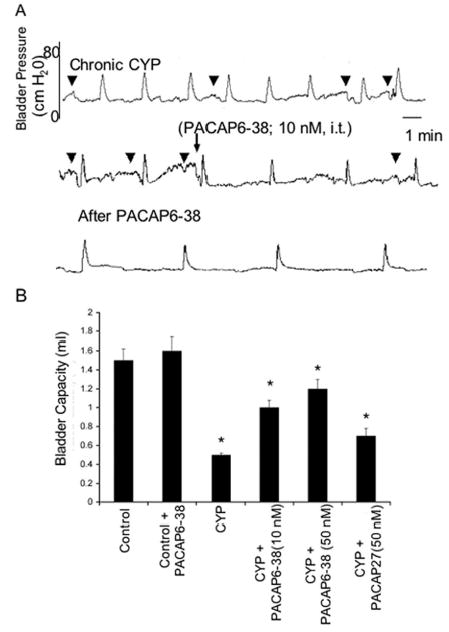Figure 4.

Intrathecal (i.t.) administration of PAC1 receptor antagonist, PACAP6-38 (10 nM) reduces voiding frequency (increased bladder capacity) after chronic cyclophosphamide (CYP)-induced cystitis (A). A. Continuous cystometrogram recording from the same rat treated chronically with CYP and then administered PACAP6-38 (10 nM; i.t.) with recording continuing after drug treatment. Intrathecal PACAP6-38 also reduced the number and amplitude of nonvoiding bladder contractions (NVCs) induced after CYP treatment. B. Summary histogram of bladder capacity in control, CYP-treated or CYP-treated with PACAP6-38 (i.t., 10 or 50 nM). CYP treatment significantly (p ≤ 0.001) reduced bladder capacity but this was significantly (p ≤ 0.001) increased after i.t. PACAP6-38 (10 or 50 nM) and again reduced after i.t. administration of agonist, PACAP27 (50 nM). PACAP6-38 (i.t., 10 or 50 nM) was without effect on bladder capacity in control rats.
